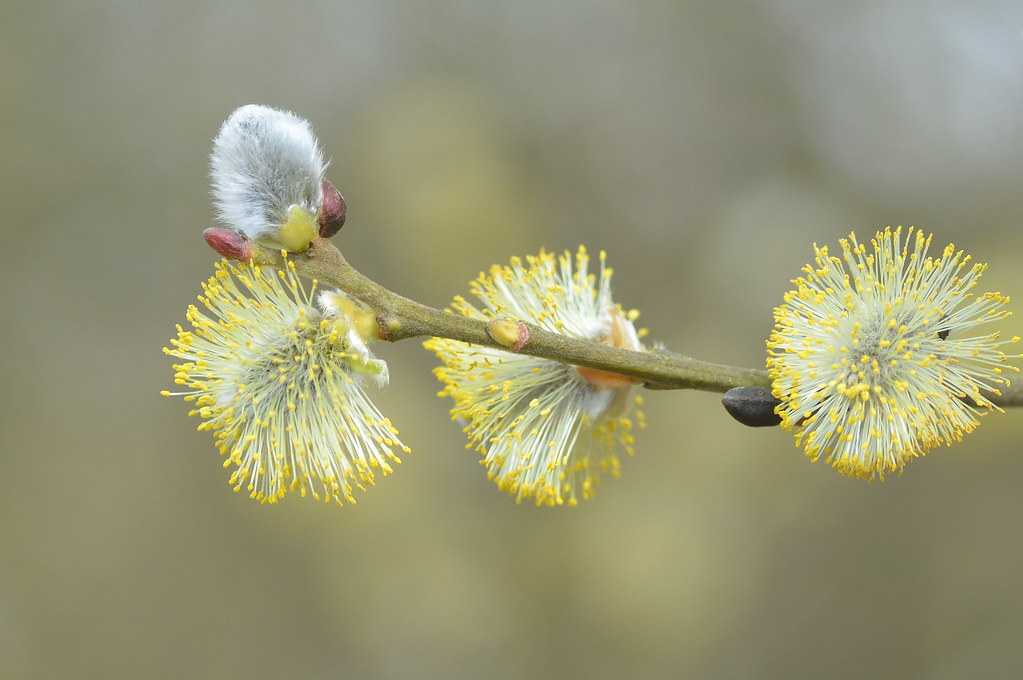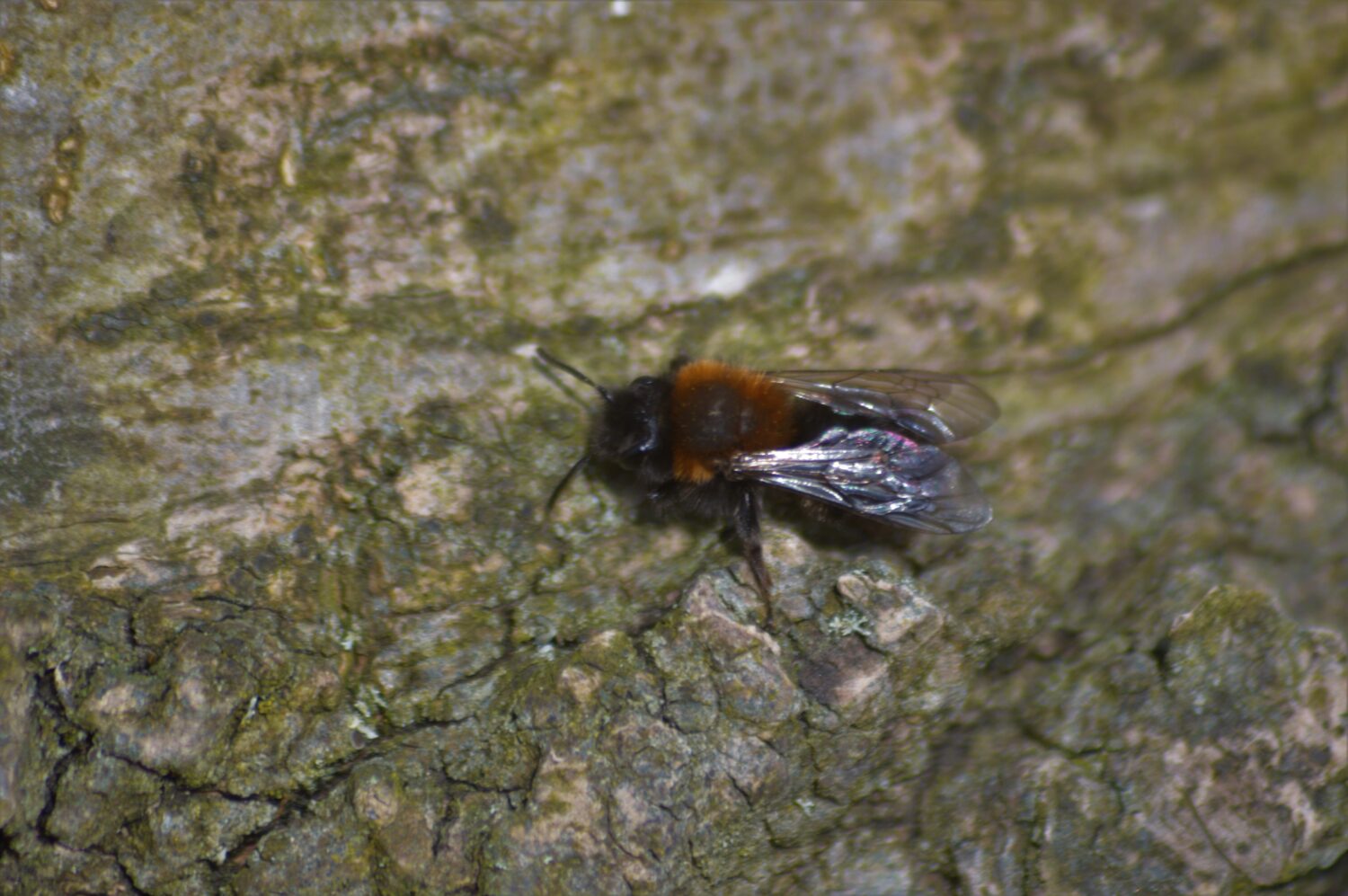(Andrena clarkella)
Easily overlooked, Clarke’s Mining Bee can be found foraging on Willow in wet woodland.
Fast facts
- Common name(s)
- Clark's Mining Bee
- Scientific name
- Andrena clarkella
- Habitat
- Wet Woodland
- Diet
- Nectar and Pollen
- When to see it
- February-May
Identification
Females are small and densely furred with a brown-haired thorax and black-haired abdomen. Often covered in the yellow pollen of Willow, females have an orange pollen brush on their hind legs.
Males are more difficult to separate from other species but are often found flying around nest sites in search for a mate.
Did you know?
On the wing with the first queen bumblebees, Clarke’s mining bee is one of the first solitary bees out in the year.

This small solitary bee can often be found foraging on the early blooms of Willow
Ecology and behaviour
On the wing early in spring, females collect pollen exclusively from the catkins of Willow. The reserve’s wet woodland, where Willow is found, is therefore vital in supporting this specialist species. Other early-flowering plants, such as Colt’s-foot and Dandelion, may also be used as nectar sources.
A species of mining bee, females excavate their nests in barer ground such as footpaths. Unlike honeybees and bumblebees, females of solitary bees construct and provision their own nests without the help of workers.
Within these burrows, females will create chambers that each contain an egg provisioned with pollen. While solitary, females can be found nesting close together in suitable areas.
Males are often found flying around nest sites, or in woodland, may also be found zig-zagging up tree trunks in search for resting females.
Clarke’s Mining Bee at Gosforth Nature Reserve
This species is most likely seen in the wet woodland where Willow grows or along the southern boundary, where the footpath edge provides suitable nesting habitat. When the first Willow catkins come into bloom, keep an eye out for this easily overlooked species. Alongside the first queen bumblebees, this species is likely one of the first bees you will see in spring at the reserve.
